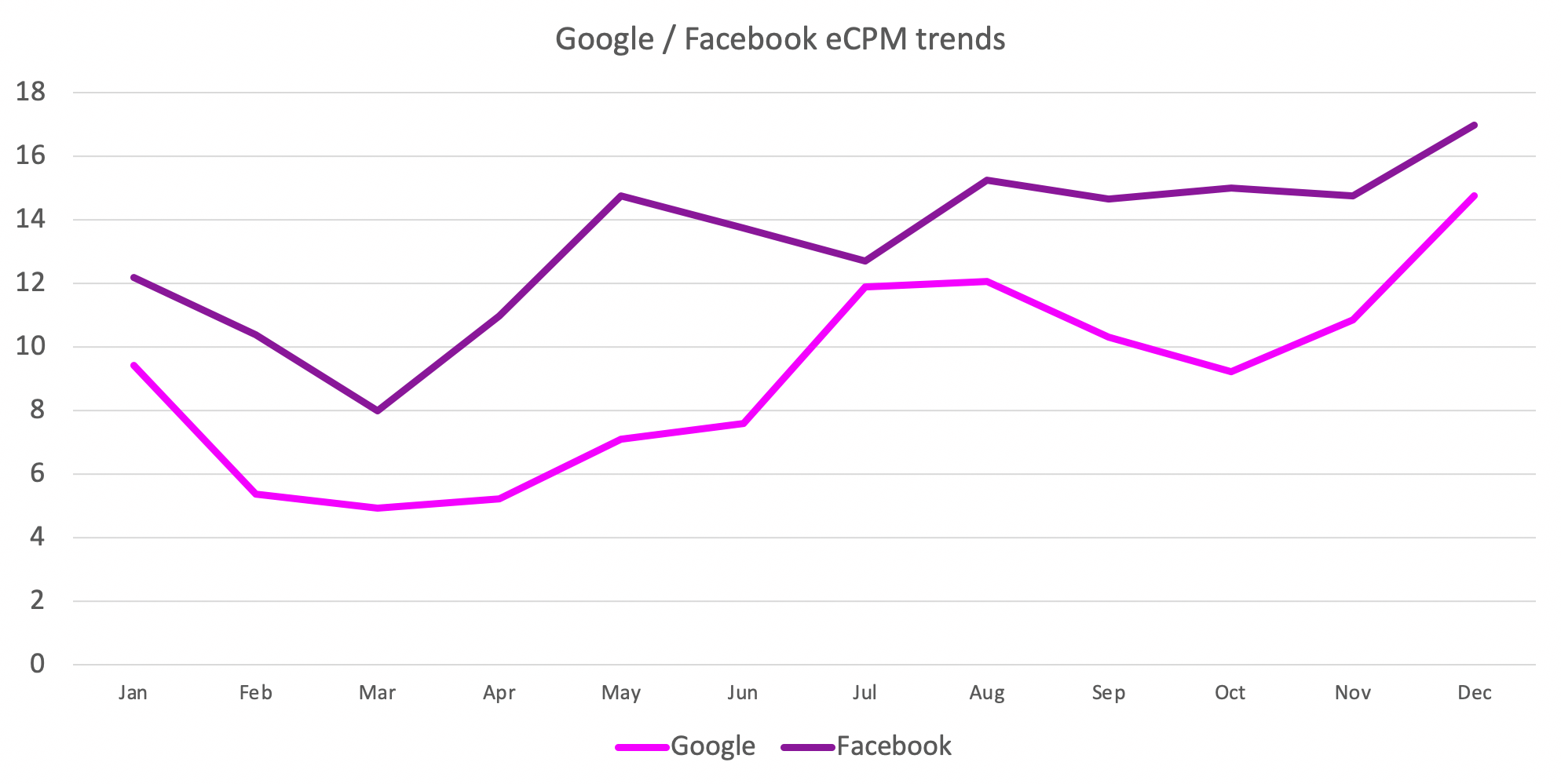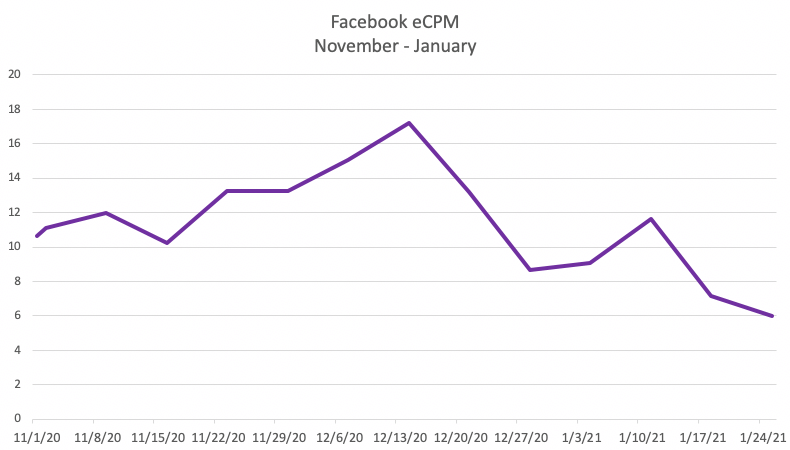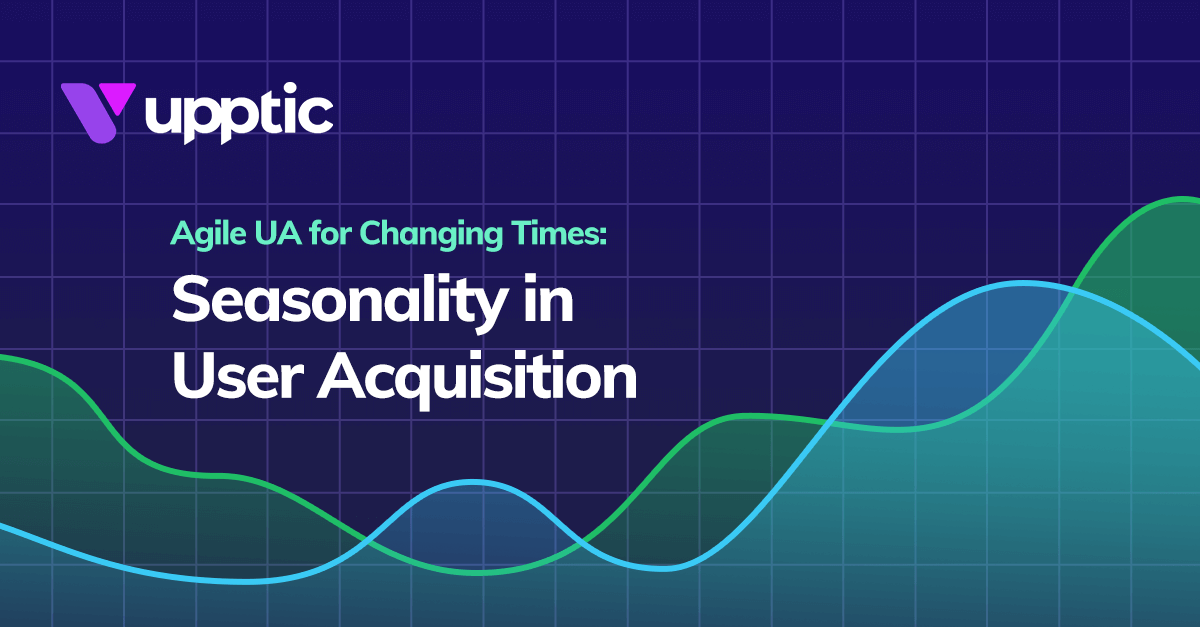Seasonality, emerging channels and black swan events. The many recent changes in our mobile app ecosystem can feel chaotic. But, with that chaos comes opportunity for savvy app marketers.
In this series we discuss the agile user acquisition methodology in the context of three macro trends:
- Ongoing channel seasonality
- Exploring and exploiting blue ocean channels
- Black swan events
- COVID
- iOS14 (ATT and SKAdNetwork)
Through this lens, we discuss the strategy and tactics of effectively deploying marketing budgets to generate outsized profitability in the modern mobile UA ecosystem.
What is Agile User Acquisition?
Profitable user acquisition requires a combination of creative development, operational excellence, in-depth analysis, and business savvy, but the lynchpin of an agile growth strategy is soberly measuring app performance and defining realistic business targets.
Growth KPIs change based on company need, but when short term profitability is the goal a flexible ROAS based framework is ideal for determining buying targets. At a high-level a useful buying model needs to do at least a few things:
- Ingest ARPU curves for user cohorts over the lifecycle of an app
- Derive correlated uplift of organic users from paid UA spend
- Output Dx ROAS targets based on a target payback period (D30/90/180/365 etc.)
At Upptic once we ingest a partner’s attribution and marketing data, we deliver the menu of payback options based on our partners business goals and establish monthly ad spend budget limits.
Despite what many agencies and ad networks will claim, bigger ad budgets don’t equate to more profits, in fact the opposite can often be true. To launch and scale a sustainable UA portfolio we run a number of tests across a series of key traffic sources, scaling up specific channels subsets we see results.
As part of our ever-evolving process, we consistently review the mobile app ecosystem to understand macro-level trends that inform how and when we deploy budgets.
Need support for your app marketing strategy? Let’s talk!

Seasonality in UA
A core macro-trend which has held for the last several years is the holiday advertising crunch and the corresponding rise of eCPMs making UA significantly more costly during Q4.
Specifically, we see this trend most severe within the SANs (Self Attributing Networks such as Facebook and Google). This is commonly attributed to the massive influx of brand advertisers during this period driving up the cost. Let’s take a look:
Portfolio level eCPM trends for Facebook and Google – 2020

Stay Agnostic and Opportunistic
An agile and effective UA strategy maintains a constant pulse on eCPMs across your channel portfolio. By proactively reallocating budget around predictable eCPM seasonality trends and price spikes, you ensure you are maximizing profits for the calendar year. Agile UA means having little loyalty to specific channels, focusing instead on exploiting seasonal trends by maximizing budget in your highest profitability pockets.
One of our favorite pools of inventory to hedge during the high eCPM holiday period is the Rewarded Video Networks (ironSource, AppLovin, Unity, and Vungle being a few of our favorites). These channels have historically attracted fewer seasonal brand advertisers and maintained relatively stable eCPMs during the volatile Q4 period (This year we saw some anomalous behavior around Rewarded Video networks, we explore how black swan events affect historical trends in future articles).
Practically, what this can mean is despite the duopoly of Facebook and Google representing significant portions of annual spend, we may aggressively cut these channels (sometimes to as low as 20-30% of portfolio spend) during this period in order to save budget and hold dry powder for more optimal market conditions.
Knowing when to go all-in
The opposite side of the opportunistic coin is knowing when to aggressively scale up spend. As noted in the Agile methodology section, we have pre-established ROAS targets and budget ceilings, which gives us a framework for rapidly expanding budget during the periods of opportunity.
Let’s take a look at when how stark it can be:
Facebook for Nov 2020 – Jan 2021

In this view, we can see that simply delaying the bulk of ad spend until after December 25th allowed us to deploy the bulk of our budget a 50% eCPM cost reduction versus the peak eCPM period one week prior. We take huge advantage of this by spending multiplicatively more during the back half of the month into early Q1 as we do during Q4.
More to come…
So far we’ve covered the tenants of Agile UA, how to structure your goals and budgets so for rapid expansion and touched on an example of how exploiting seasonality can be an incredibly effective method for driving significant results for your mobile game or app.
Stay tuned for future installments of our series where we cover:
- Exploring and exploiting blue ocean channels
- Black Swan Events
- COVID
- iOS14 (ATT and SKAdNetwork)
Upptic Growth Services
Upptic Growth Services team provides strategic consulting and full-stack operational marketing to your growing mobile app or business. Our team consists of three core pillars: User Acquisition, Analytics, and Creative Development. We work with some of the biggest names in mobile including Candywriter (acquired by StillFront), GenJoy (Acquired by Scopely), GSN, Wizards of the Cost, Exploding Kittens, and many more.
Upptic is currently seeking high potential apps and companies that can support profitable scaling. If you believe partnership with Upptic might benefit your business, reach out to our Growth Services team – we’re happy to talk!
Want to learn how to grow your app using Agile UA? Let’s talk.


